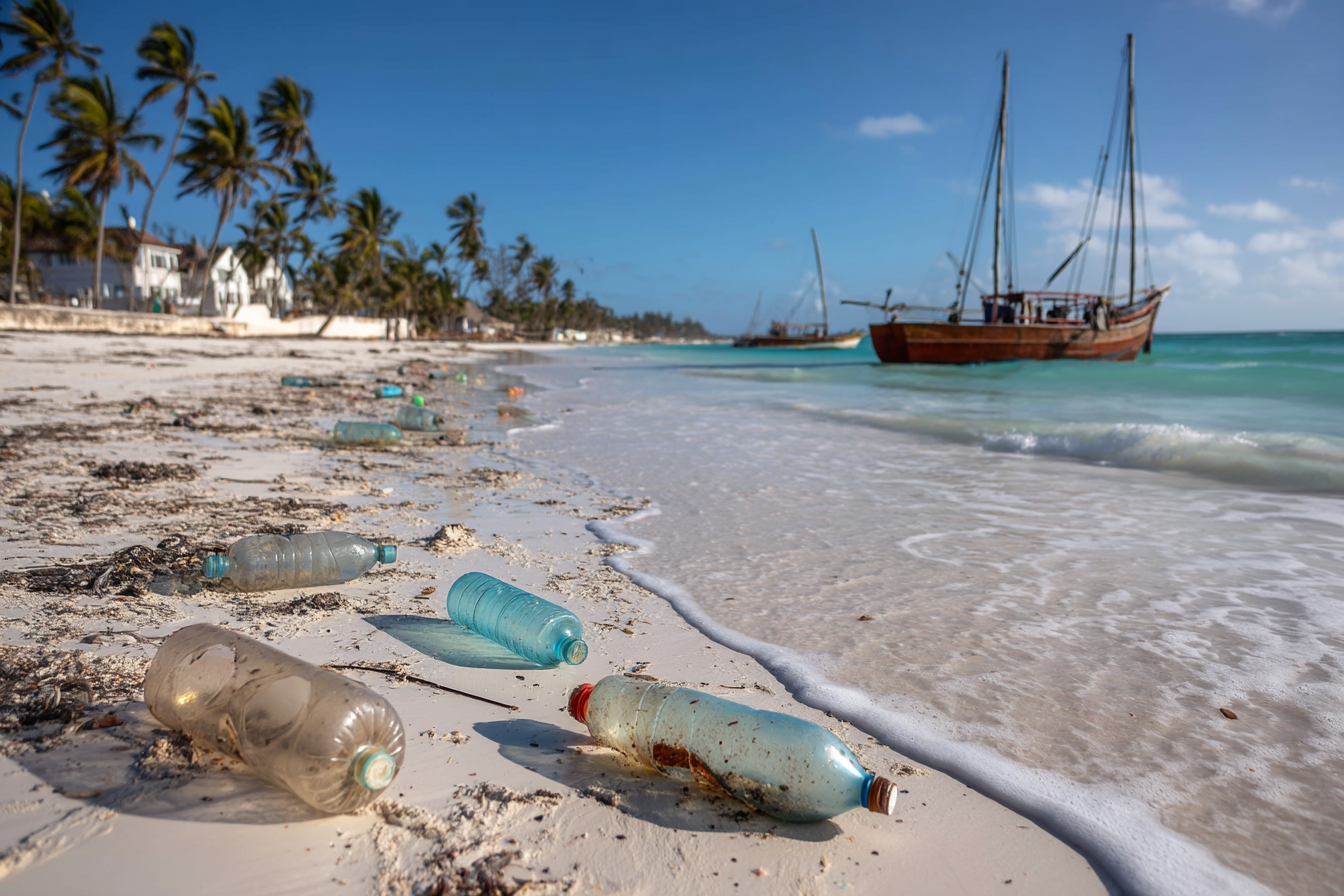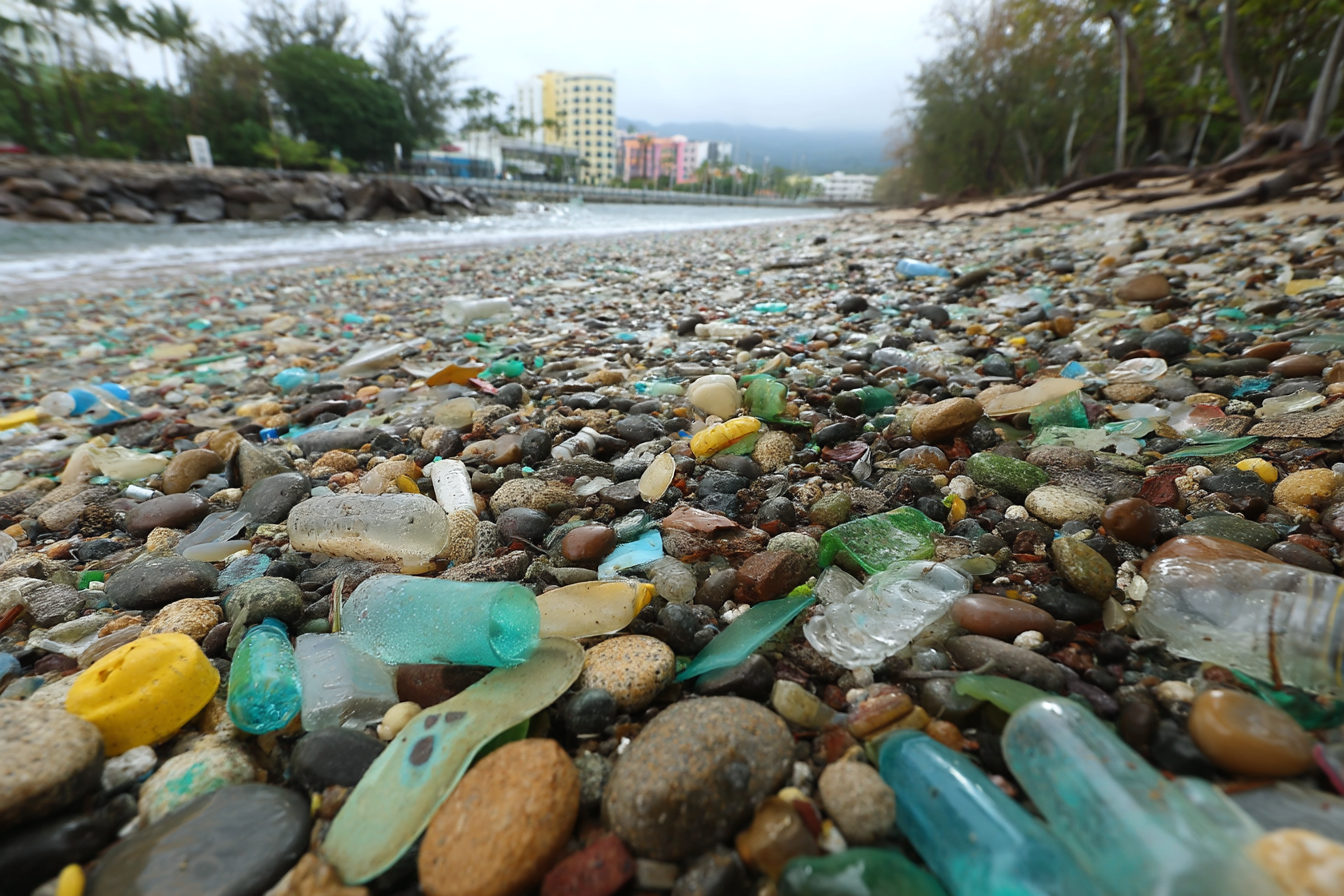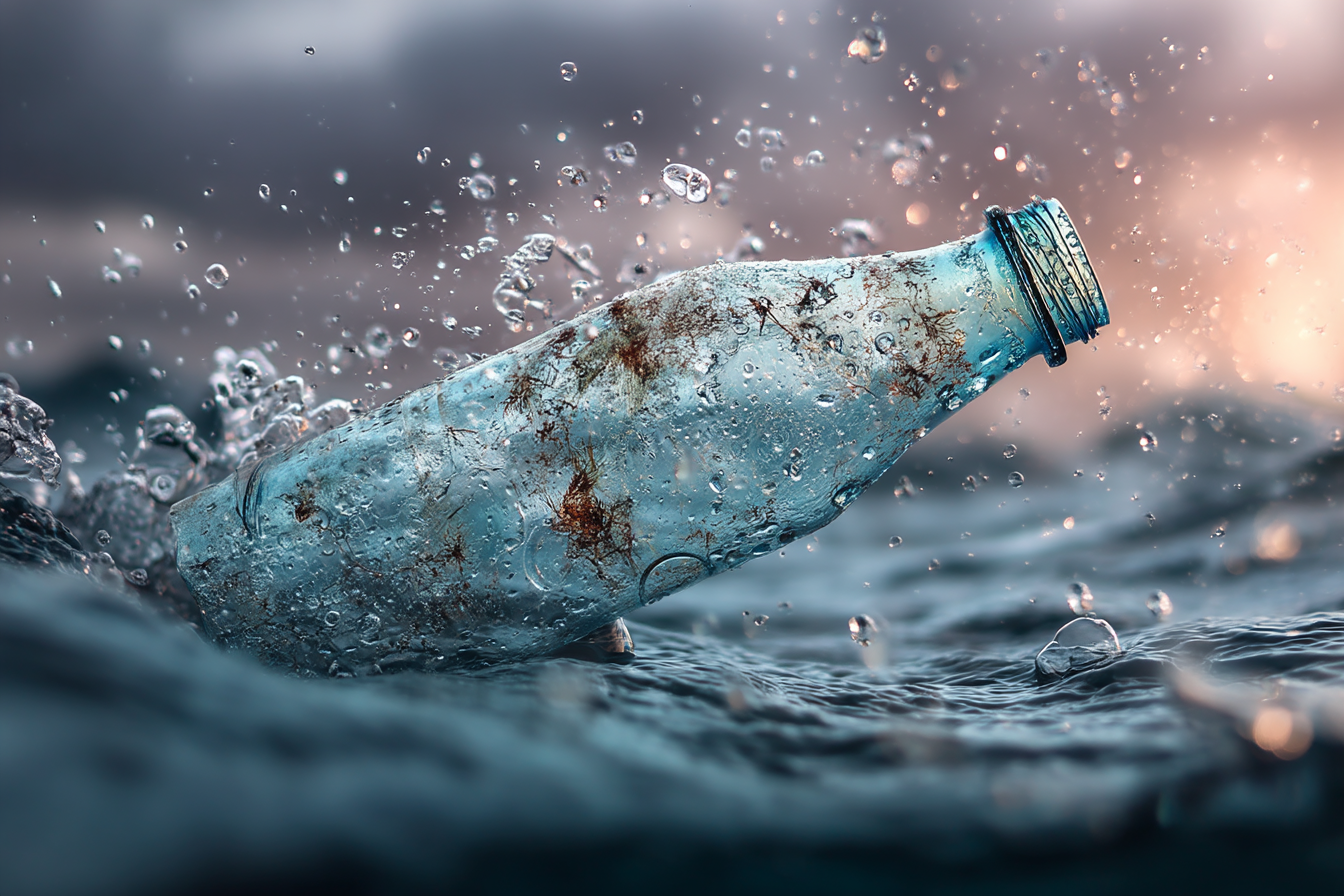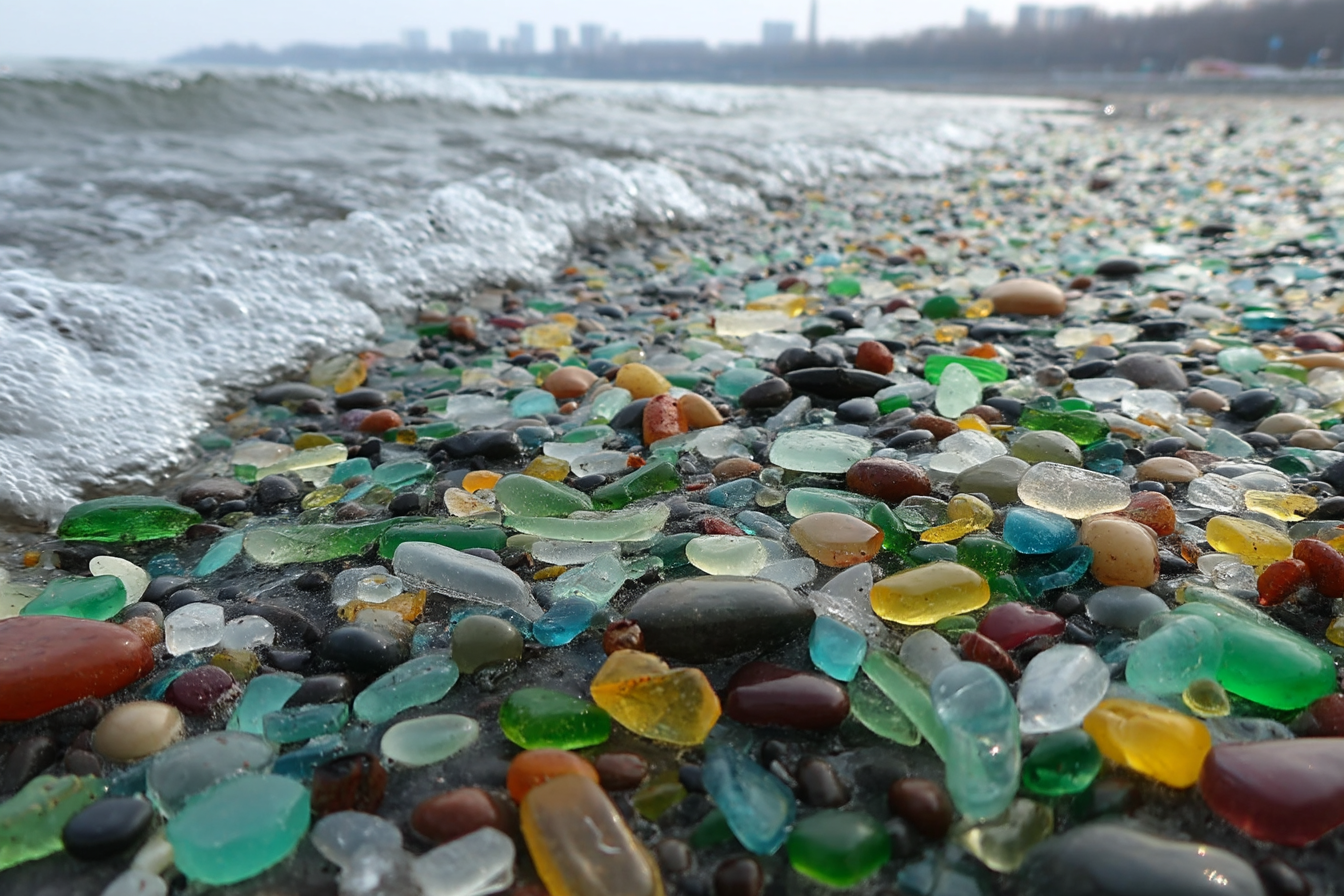I spent my thirty-fifth birthday picking up other people’s garbage. Not exactly the champagne-and-cake celebration most people envision, but there I was at 7 AM on a drizzly Saturday morning, garbage bag in hand, combing a stretch of coastline near Bristol with forty other volunteers. By noon, we’d collected an impressive mountain of debris – 326 plastic bottles, 418 food wrappers, innumerable fragments of unidentifiable plastics, and one surprisingly intact garden gnome that had apparently gone for an unauthorized swim.
Everyone felt great. We’d “made a difference.” Photos were taken. Social media posts were crafted. A local news crew interviewed the organizer about our community spirit. I should have been riding that warm post-volunteerism glow, but instead found myself staring at our pile of collected trash and feeling a creeping sense of futility. Because I knew something that perhaps not everyone there did: the stretch of beach we’d just spent five hours meticulously cleaning would likely be covered with a fresh layer of plastic within a few tidal cycles. And somewhere across the globe, during those same five hours, roughly 8,000 tons of new plastic had entered the ocean.
Don’t get me wrong – I’m not dismissing beach cleanups. They serve important purposes: removing dangerous debris that might harm wildlife, raising awareness, collecting data on marine litter, and connecting people directly to an environmental issue that might otherwise remain abstract. I organize them myself several times a year. But I’ve grown increasingly frustrated with the narrative that beach cleanups are a meaningful solution to the ocean plastic crisis, rather than what they actually are: a necessary but totally insufficient emergency response to a systemic problem.
The uncomfortable truth is that we cannot clean our way out of this mess. The mathematics are unforgiving. Current estimates suggest between 8-12 million metric tons of plastic enter our oceans annually – that’s roughly a garbage truck worth every minute. Meanwhile, even the most ambitious cleanup projects recover mere thousands of tons. We’re bailing water from a sinking ship with a teaspoon while the hole in the hull keeps growing.
This realization hit me particularly hard during a research trip to Indonesia a few years ago. I’d gone to study community waste management initiatives and found myself on a once-pristine beach that was now buried under a seemingly endless carpet of plastic. Local villagers conducted regular cleanups, but faced with the daily arrival of more trash from upriver communities and offshore currents, they were fighting a losing battle. One elderly fisherman gestured toward the horizon and said something that his daughter translated as: “We can clean forever, but until they stop sending it, it will never end.”
His words crystallized something I’d been thinking for years: the disproportionate focus on cleaning up ocean plastic rather than preventing it from getting there in the first place isn’t just inefficient – it’s a dangerous distraction from the systemic changes needed to address this crisis at its source.
So what do those upstream interventions actually look like? They’re less photogenic than beach cleanups, certainly. You can’t take a heartwarming photo of “improved municipal waste collection systems” or “extended producer responsibility policies.” But these unsexy, systemic approaches are where the real solutions lie.
Let’s start with waste management infrastructure – perhaps the least glamorous yet most essential element of preventing ocean plastic pollution. A staggering 2 billion people worldwide lack access to regular waste collection. In regions without adequate systems, what choice do people have except to burn their trash or dispose of it in waterways? I’ve visited communities where conscientious residents keep their homes spotlessly clean by sweeping waste directly into rivers – not out of disregard for the environment, but because there simply isn’t an alternative disposal option. No amount of consumer education about plastic pollution will matter if people have nowhere to put their waste except the nearest body of water.
While in Bali for a marine conservation conference, I visited a community that had transformed its waste management approach within just two years. Previously, with no municipal collection, trash had either been burned or dumped in a ravine that channeled directly to the ocean during rainy season. A locally-developed system now included segregated collection, a small material recovery facility where valuable recyclables were sorted, and a community composting program for organic waste. The volume of material reaching the ravine (and eventually the ocean) had decreased by over 60%. Importantly, this wasn’t a Western-imposed solution – it was designed by community members based on local needs, resources, and cultural contexts.
The cost of implementing basic waste management infrastructure globally is estimated at around $40 billion – a substantial figure, but significantly less than the annual economic damage caused by plastic pollution. When I share this figure during talks, I often compare it to global military spending (approximately $2 trillion annually) to provide context on our societal priorities. Forty billion suddenly seems quite manageable when viewed that way.
Moving further upstream, we encounter the thorny issue of plastic production itself, which has increased twenty-fold over the past 50 years and is projected to double again by 2040 under business-as-usual scenarios. My friend Jun, who works in sustainable finance, puts it bluntly: “We’re focused on improving recycling rates from 10% to 15% while production increases by 400%. The math doesn’t work.”
He’s right. Even perfect waste management systems would struggle to contain the ever-growing tsunami of single-use plastics. This is why interventions targeting production are essential – policies like bans on problematic single-use items, taxes on virgin plastic production, and extended producer responsibility (EPR) schemes that require manufacturers to bear the financial responsibility for managing their products at end-of-life.
During a packaging innovation workshop I facilitated for food producers, I was struck by how quickly design solutions emerged once the right incentives were in place. When told they would hypothetically be financially responsible for collecting and recycling their packaging, participants rapidly began reimagining their products – eliminating unnecessary layers, switching to monomaterials that recycling systems can actually process, and in some cases questioning whether packaging was needed at all. One participant, initially defensive about his company’s notoriously over-packaged product, was by the end sketching a completely reimagined version that used 80% less material. The technology and creativity exist; what’s lacking are the market drivers to scale these solutions.
South Korea offers an instructive example of how policy can drive transformation. Their EPR system for packaging has achieved recycling rates of over 80% for many materials by making producers financially responsible for collection and recycling. Just as importantly, the policy has pushed companies to redesign packaging to minimize costs – leading to significant reductions in material use and shifts toward more recyclable formats. During a study tour there, an environmental official told me: “Companies complained bitterly when the policy was introduced. Now they see it as normal business practice.” Indeed, many Korean companies now market their eco-designed packaging as a selling point, having turned a regulatory requirement into a competitive advantage.
Material innovation represents another upstream intervention with significant potential. I’m generally skeptical of silver-bullet technological fixes, especially after investigating numerous “revolutionary” plastic alternatives that proved disappointing upon closer examination. However, some promising developments are emerging, particularly in compostable biomaterials for specific applications where recycling is impractical. The key is ensuring these materials actually break down in real-world conditions – not just in the idealized environment of industrial composting facilities that many communities lack access to.
I recently tested several supposedly marine-degradable materials in a home experiment, suspending samples in a saltwater tank for six months. The results were sobering – most showed minimal degradation, with one manufacturer’s “ocean-friendly” material showing no visible changes whatsoever. This isn’t to dismiss the potential of material innovation, but rather to emphasize that we need rigorous standards and testing to prevent false solutions. When I called the company about my findings, their representative explained that their material would degrade in “marine conditions” – which apparently meant specific bacterial concentrations and UV exposure levels not typically found in actual ocean environments. This kind of greenwashing isn’t just dishonest; it’s actively harmful when it creates a false sense that we’ve solved problems we haven’t.
Redesigning delivery systems offers another promising approach. The explosion of “packaging-free” shops and refill stations represents a return to distribution models that were standard before single-use packaging became normalized. I remember my grandmother describing how she bought everything from flour to cleaning products by bringing her own containers to the local shop. What was once considered old-fashioned is now recognized as visionary.
My own experiment with a month of package-free shopping revealed both the possibilities and limitations of this approach. Some items were surprisingly easy to obtain without packaging – fresh produce, bulk dry goods, and cleaning products were readily available at local refill shops. Others proved nearly impossible, highlighting the need for systemic rather than individual solutions. I couldn’t find package-free options for medications, for instance, no matter how many reusable containers I brought with me. This experience reinforced my belief that while consumer choices matter, they must be supported by redesigned systems that make sustainable options the default rather than the exception.
Policy interventions like plastic bag bans or taxes demonstrate how quickly behaviors can change when the right incentives are in place. I was living in Ireland when they introduced the plastic bag levy in 2002 – perhaps the world’s first major policy targeting single-use plastic. The results were immediate and dramatic: a 90% reduction in plastic bag use within weeks. What fascinated me was how rapidly the new behavior (bringing reusable bags) became normalized. Within months, plastic shopping bags had transformed from everyday items to objects of mild social embarrassment. I’ve seen similar shifts following bag regulations worldwide – a reminder that behaviors we consider fixed can change remarkably quickly with the right policy nudges.
The finance sector’s role in enabling plastic pollution remains woefully under-examined. Global banks have provided hundreds of billions in financing to plastic manufacturers, often with minimal environmental due diligence. At a sustainable finance conference, I asked representatives from three major banks about their plastic pollution policies. Their answers ranged from vague commitments to genuine confusion about why this would fall under their environmental responsibility. Yet financial institutions have tremendous power to influence corporate behavior through their lending criteria. Divestment campaigns targeting fossil fuel companies have demonstrated how investor pressure can accelerate corporate transitions; similar approaches focused on plastic production could prove equally effective.
Education and awareness-raising efforts, while insufficient alone, remain vital components of a comprehensive approach. However, the focus of these efforts needs to shift from individual consumer choices (“remember your reusable water bottle!”) to building support for systemic interventions. During a school workshop program I developed, we moved away from simply teaching children about plastic pollution to engaging them in redesigning systems – having them map their community’s waste management infrastructure, identify weaknesses, and propose improvements. Their solutions were often remarkably insightful, focusing on systemic rather than individual changes.
Indigenous and traditional knowledge offers valuable perspectives that are too often overlooked in technical discussions of ocean plastic. While visiting coastal communities in the Pacific, I learned about traditional practices for making food containers from leaves and fibers that provided all the functionality of modern packaging while naturally decomposing after use. One elder told me: “We’ve always known how to make things that return to the earth. You had to forget this knowledge to create your plastic problem.” His words have stayed with me as a reminder that our current predicament is not the inevitable result of progress, but rather a detour from sustainable practices that many cultures maintained for millennia.
Where does all this leave us? With the recognition that while beach cleanups remain necessary emergency responses, meaningful progress requires addressing the systems that deliver plastic to our shores in the first place. This means improving waste management infrastructure in the most affected regions, implementing policies that reduce unnecessary production, redesigning products and delivery systems, holding producers financially responsible for the full lifecycle of their products, and shifting financial flows from problematic production toward circular solutions.
I still participate in beach cleanups. That gnome we found now sits on my windowsill as a reminder of both the absurdity of our plastic problem and the importance of direct action. But I divide my time and advocacy efforts proportionally – some toward necessary but downstream solutions like cleanups, and much more toward the upstream interventions that could actually turn the tide on ocean plastic pollution.
After one recent cleanup, a new volunteer asked me whether I thought our efforts made a difference. I told her they absolutely did for the seabirds that might have ingested the items we collected, or the turtles that might have become entangled in the fishing line we removed. But I also told her that the most important outcome wasn’t the trash we collected but the conversations we had while doing so – conversations that might inspire participants to become advocates for the systemic changes that would make beach cleanups increasingly unnecessary. Perhaps that’s the true measure of a successful cleanup: not how much plastic we remove from the beach, but how effectively we catalyze action to keep it from getting there in the first place.








